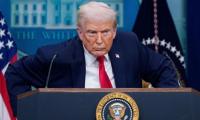Is literary theory a rulebook of criticism?
Literary theory has generally been taken as rulebook of criticism. Criticism rules have never taken the form of a theory as their use is limited only to the critic. What should be understood is that in the light of which literary theory any rule of criticism is being used.
Literary theory is the revision, appraisal, and elucidation of literature. Modern criticism theory is often cultured by literary theory, which is the theoretical discussion of its approaches and objectives. Though the two undertakings are meticulously interrelated, in the past, men of literature themselves were literary theorists, and it was not the job of all and sundry.
Whether or not literary theory should be considered a separate field of inquiry from criticism theory, or contrariwise from this book review, is a matter of some argument. For example, some theorists make no distinction between literary theory and literary criticism, and almost always use the terms together to describe the same concept.
More or less critics contemplate literary criticism a practical application of literary theory, because criticism always deals directly with particular literary works, while theory may be more general or abstract.
Literary criticism is basically the assessment of the worth of a specific work or form of work on such grounds as: the literary significance of the theme and the usage of language; the upshot of a text; and the aesthetic bearing of the text; as these attributes are seen to be mutually dependent. Theory is the method of understanding what the kind of literature is, what purposes it has, what the relation of text is to author, to reader, to language, to society, to history.
Dr. Syed Ashfaq Hussain Bukhari has tried to mine much material, conversation, and academic sanity out of the articles quoted in his book titled ‘Tanqeedi Wa Adabi Nazreyaat’. The book, published by Islamabad’s Shakhay Zarreen, includes articles by Atash Durrani, Wazeer Agha, Gopi Chand Narang, Qazi Afzaal Hussain, Nasir Abbas Nayyar, Qasim Yaqoob and some other important writers.
What if the writers are wide off-the-mark? What is the point, then? A very simple way of thinking about literary theory is that these concepts perform as diverse lenses; critics use to talk about literature. These different lenses allow critics to consider works of literature based on certain guidelines within that school of theory. These diverse lenses also permit critics to focus on specific features of a work they think essential.
For instance, if a critic is working with certain Marxist theory, s/he will talk from economic point of view. If a critic is working with post-colonial theory, s/he might look at the piece of literature from colonial. Hopefully, after reading through the articles by different authors, literary theory and criticism theory will become a bit easier to understand and use.
Let it be noted here that the schools of literary criticism and their explanations included in the book are by no means the only way of distinguishing these separate areas of theory. Indeed, many critics employ tools from two or more schools of literature and criticism in their work. Some would define differently or greatly expand the general statements given by the writers quoted in the book. Their elucidations may constitute a starting point for the readers’ own study about literary theory and criticism theory.
It is better to read all the scholars and works provided on literary theory and criticism theory in this book from each school for more understanding of these concepts.
-
 Alexander Skarsgard Breaks Silence On Rumors He Is Bisexual
Alexander Skarsgard Breaks Silence On Rumors He Is Bisexual -
 King Charles Faces Rift With Prince William Over Prince Harry’s Invictus Games
King Charles Faces Rift With Prince William Over Prince Harry’s Invictus Games -
 Elon Musk’s Critique On ChatGPT Safety Draws Sharp Response From Sam Altman
Elon Musk’s Critique On ChatGPT Safety Draws Sharp Response From Sam Altman -
 Katherine Ryan Takes Aim At Brooklyn Beckham In Fierce Defense Of His Parents
Katherine Ryan Takes Aim At Brooklyn Beckham In Fierce Defense Of His Parents -
 How Timothy Busfield, Melissa Gilbert Really Feel After Release From Jail
How Timothy Busfield, Melissa Gilbert Really Feel After Release From Jail -
 OpenAI, Bill Gates Launch ‘Horizon 1000’ To Transform AI Healthcare In Africa
OpenAI, Bill Gates Launch ‘Horizon 1000’ To Transform AI Healthcare In Africa -
 Prince Harry Receives Praises For Exposing Dark Side Of British Tabloids
Prince Harry Receives Praises For Exposing Dark Side Of British Tabloids -
 Andrew Forces Beatrice, Eugenie To Lose $60 Million Safety Net Saved For Retirement
Andrew Forces Beatrice, Eugenie To Lose $60 Million Safety Net Saved For Retirement -
 Nvidia CEO Jensen Huang To Visit China To Push Re-entry Into AI Chip Market
Nvidia CEO Jensen Huang To Visit China To Push Re-entry Into AI Chip Market -
 U.S. On Verge Of Losing Measles-free Title Due To Outbreak
U.S. On Verge Of Losing Measles-free Title Due To Outbreak -
 Harry Styles Excites Fans As He Announces Release Date Of New Song
Harry Styles Excites Fans As He Announces Release Date Of New Song -
 Japan’s Ex-PM Shinzo Abe’s Killer Is Set To Be Sentenced: How Much Punishment Could He Face?
Japan’s Ex-PM Shinzo Abe’s Killer Is Set To Be Sentenced: How Much Punishment Could He Face? -
 Prince Harry, Meghan Markle’s Return To UK Could Create Royal Family Dilemma
Prince Harry, Meghan Markle’s Return To UK Could Create Royal Family Dilemma -
 Prince Harry Turns Troubled With No Sense Of Home: ‘Isolation Is Getting To Him Mentally’
Prince Harry Turns Troubled With No Sense Of Home: ‘Isolation Is Getting To Him Mentally’ -
 Vitamin D Link To Respiratory Diseases Will Shock You
Vitamin D Link To Respiratory Diseases Will Shock You -
 A$AP Rocky Gives His Take On Children's Budding Personalities
A$AP Rocky Gives His Take On Children's Budding Personalities



